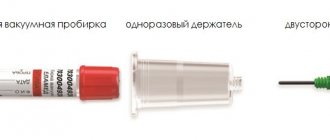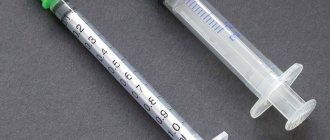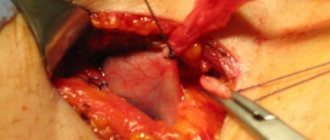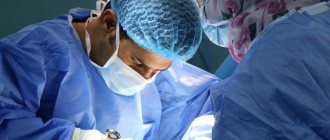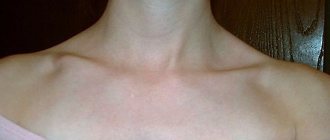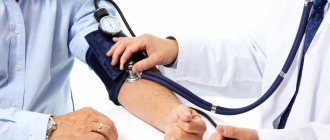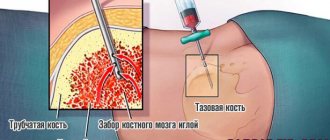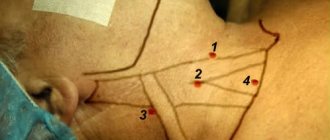Any pathological changes in the body are always reflected in the composition of the blood. It is the primary marker for assessing the functionality of internal organs, identifying infections, allergies, oncological processes, etc.
To conduct the study, capillary or venous blood is taken from the patient. The procedure for taking blood from a finger, as a rule, takes place without consequences, but a bruise after taking blood from a vein is not uncommon. Why is this happening? There may be several reasons, some completely harmless and some requiring attention.
Why may hematomas appear?
The causes of bruises after taking blood from a vein vary. Most often, their list includes the following factors:
- Puncture of one or two walls of the vein during the blood sampling procedure.
- The use of syringes and needles of insufficient quality.
- The patient has “fragile” vessels with thin walls.
- Close proximity of blood vessels to the surface of the skin.
- Systemic blood diseases that cause decreased blood clotting.
- Failure to follow the doctor’s recommendations about the required time after the injection, which the patient should keep his arm bent at the elbow.
You should also remember such a moment as the human factor. Sometimes the appearance of bruises from injections into a vein depends on the degree of professionalism of the health care worker performing the injection.
Results
Bruises on the veins after taking blood for testing occur:
- due to errors (blood was taken incorrectly) or due to inexperience of medical workers;
- due to vascular pathologies and personal characteristics of the patient’s body;
- if the patient does not comply with the rules of behavior before blood sampling and after the procedure.
If a bruise has formed, to speed up its disappearance you can use ointments and gels that improve tissue trophism, relieve swelling, and accelerate blood microcirculation.
Why does a bruise appear?
A bruise after taking blood from a vein, the cause of which most patients consider the lack of qualifications of the medical worker, can form during the collection of biological fluid, as well as after all manipulations or the next day. Medical error is not excluded from the possible factors contributing to the formation of a hematoma, but there are other sources of the problem.
Bruises from injections into a vein or after donating blood can appear due to:
- poor clotting;
- frequent manipulation of the same vein (repeated testing or injection of drugs);
- high venous pressure;
- thinning of vascular walls;
- low quality medical instruments (dull needles);
- simultaneous puncture of the anterior and posterior walls of the vein;
- non-compliance with medical recommendations during vein manipulation;
- untimely removal of the tourniquet;
- the patient's use of medications that thin the blood;
- premature extension of the joint after drawing blood from a vein or injection.
After visiting the manipulation room, not only bruises, but also bumps may appear.
In most cases, they are formed as a result of the drug that was administered to the patient entering the subcutaneous space.
Other reasons include:
- introduction of oil-based drugs;
- non-compliance with sanitary standards;
- frequent placement of catheters;
- non-compliance with the rules for the speed of drug administration;
- individual specific reaction to vein damage, etc.
How to avoid a bruise
Immediately after the needle is healed, you need to bend the joint and do not straighten it for about 5-10 minutes.
For the remaining 24 hours, it is not recommended to physically overload your arm.
Pathological causes of bruises
When drawing blood, a medical specialist punctures the skin and venous wall, essentially causing a minor injury to the area of the arm at the elbow. As a result of damage, a cavity is formed into which blood begins to actively flow.
A subcutaneous hematoma is formed - an accumulation of liquid, thickened or coagulated biological fluid in the subcutaneous fat. If the manipulation is professionally performed and the patient follows safety rules, bruises rarely appear.
The pathological reasons why hematomas can form and pain may occur after blood sampling are associated with the fragility of the patient’s blood vessels. This condition of the veins can be an individual characteristic of the body or a consequence of a violation of the structure of the vascular wall.
The occurrence of vascular fragility is promoted by:
- high levels of the hormone adrenaline in the blood due to constant neuropsychological stress;
- deficiency of ascorbic acid and rutin (vitamin P) in the body;
- diabetes;
- hypertension;
- varicose veins;
- viral infections (including HIV);
- oncohematological diseases (cancer of the blood and lymphatic system);
- atherosclerosis;
- obesity;
- thrombocytopenia (decrease in the number of platelets - blood cells responsible for blood clotting), accompanying hematological diseases, cirrhosis of the liver, hemolytic or pernicious anemia and other diseases.
The appearance of hematomas and pain can be caused by genetic hereditary coagulopathies - bleeding disorders (hemophilia, von Willebrand disease).
Important! If compactions (nodes) appear in the area of the hematoma, you should consult a phlebologist or vascular surgeon.
What does the appearance of a hematoma mean?
When blood is taken from a patient's vein or an intravenous injection is given, a blood vessel is punctured.
From the hole formed by the needle, biological fluid can exit into the intercellular space and fill (wet) the subcutaneous tissue. The size of the bruise will depend on how much blood comes out of the injured vein.
- Why do the veins in your arms hurt and what to do about it?
Prevention
In order to avoid the formation of a bruise or bump after an injection into a vein or taking tests, you must:
| Preventive actions | Description |
| Relaxation of arm muscles | During the procedure, you need to relax your hand as much as possible, since when the muscles are tense, the likelihood of tissue damage increases significantly |
| Choosing the right needle size | To administer the medicine, you must use a syringe with the appropriate needle diameter. If a large volume of fluid is injected with a thin needle, the likelihood of bruising at the injection site increases. |
| Rate of drug administration | The medicine must be injected smoothly and slowly to avoid leakage of the solution into the tissue surrounding the vein |
| Measures after the end of the procedure | After the injection, cotton wool soaked in alcohol is pressed firmly against the vein puncture site for 5–7 minutes. |
If the hematoma at the injection site reaches a large size and quite severe pain or cramps occur, you should consult a doctor.
This may mean that the vein is seriously damaged and may require the help of a surgeon.
Treatment process
There are several methods for treating a hematoma on the arm. To do this, you can use a pharmaceutical drug or a folk remedy. Among the most effective methods of therapy are:
- Cold treatment. If a bruise appears on your arm, you should immediately apply ice cubes to the injured area. Thanks to the cold, blood vessels narrow. It is not advisable to keep the bruise cold for a long time, as hypothermia may occur. The entire process should last no more than 15 minutes.
- An elastic bandage will effectively solve the problem. To do this you need to bandage your hand. This will prevent the process of hemorrhage into the tissue. Thanks to this, the hematoma will not grow to a large size.
- Using a heating pad can help relieve pain. The heat dilates the blood vessels and the fluid is quickly absorbed. To do this, you can use either a heating pad or a bath.
An iodine mesh will help get rid of a bruise. To do this, you need to draw a mesh on the hematoma. With this simple method you can quickly get rid of a hematoma.
Treatment
If a bruise appears, measures should be taken to eliminate it. Medicines for external use will help speed up the process of hematoma resorption. This will relieve the patient from pain and aesthetic defects of the skin. Ointments and gels for eliminating hematomas have anti-inflammatory, blood thinning, anti-edematous, and angioprotective effects.
List of main topical drugs
| Name | Active substance | Frequency of use |
| Bruise OFF | medicinal leech extract | up to 5 times a day |
| Troxerutin Troxevasin | troxerutin (vitamin P derivative) | twice/day |
| Badyaga 911 | extracts of chamomile, badyagi, horse chestnut | three times a day (children - twice) |
| Lyoton | heparin sodium | twice/day |
| Express Bruise | badyagi extract | no more than 5 times/24 hours |
| Heparin | sodium heparin | twice/day |
| Arnica (homeopathic remedy) | arnica extract, salicylic acid, turpentine, camphor, viper venom | three times/day |
| Turpentine | an oil mixture of terpenes and terpenoids obtained from the resins of coniferous trees. | morning and evening as a compress |
| Viprosal | salicylic acid, turpentine, camphor, viper venom | once (at night) |
| Girudoven | horse chestnut, menthol, leech extract | 2-3 times/day |
| Traumeel | arnica, chamomile, witch hazel, St. John's wort, belladonna, comfrey, echinacea | 2-3 times/day |
Medicines for external use are contraindicated for use on open wounds, erosive and ulcerative skin lesions. Traditional medicine helps quickly eliminate bruises.
The most popular compresses include:
- Sodium bicarbonate (baking soda) solution. The proportion is a tablespoon of powder per glass of water. Soak a bandage in the solution, apply it to the damaged area of the hand, secure with plastic cling film and a dry bandage. Keep the compress for 60-90 minutes.
- White cabbage leaves. Remove the top leaves from the stalk, cut out the hard part, grease the leaves with liquid honey, apply to the bruise, wrap with plastic cling film and a dry bandage. Leave for 2-3 hours.
- Onion. Grind a medium onion, add ½ tsp. salt, mix. Apply the paste in a layer on the hematoma, cover with gauze, seal hermetically with cling film (in several layers), secure with a bandage.
Example of products for external use to combat bruises
Such a common remedy as iodine mesh should be used with caution. To avoid getting a burn to the epidermis, you need to use a small amount of a solution with a concentration of 5%. If you are allergic to iodine, application of the mesh is contraindicated.
How to behave after donation?
The donor’s body cannot immediately replenish blood loss, so after donating blood you must adhere to a number of rules.
- Immediately after donating blood, sit relaxed for 10–15 minutes.
- If you feel dizzy or weak, please contact staff. The easiest way to overcome dizziness is to lie on your back and raise your legs above your head, or sit down and lower your head between your knees.
- Avoid smoking for an hour before and after blood donation.
- Do not remove the bandage for 3-4 hours, try not to let it get wet.
- Try not to undergo significant physical activity during the day.
- Avoid drinking alcohol for 24 hours.
- Try to eat plentifully and regularly for two days.
- Drink increased amounts of fluid for two days.
- Vaccinations after donating blood are permitted no earlier than 10 days later.
- There are no restrictions on driving a car on the day of blood donation. You can drive a motorcycle 2 hours after blood donation.
What needs to be done to restore the body after donating blood?
On the day of blood donation, heavy physical and sports activities and heavy lifting are not recommended. For two days, it is recommended to eat well and regularly, drink at least 1–2 liters of liquid per day (alcohol is not recommended). Then lead your normal lifestyle.
To restore your blood composition faster, it is recommended to drink more fluids - juices, tea. Proper nutrition is necessary: the donor’s diet should always contain protein, which determines the level of hemoglobin in the blood. Products containing protein - meat, lentils, beans and all legumes, fish, etc.
How does donating blood affect your health?
Donating blood on a regular basis is useful for the prevention of diseases of the cardiovascular system and, in addition, promotes self-renewal of the entire body. Scientists, in the course of examining a large number of men, found that those who regularly donate blood have heart attacks ten times less often. American researchers from the Kansas Medical Center confirmed that men who are regular donors are 30% less likely to suffer from heart attacks.
Moreover: donating blood and subsequent renewal most directly influence the improvement of a person’s emotional state. And in serious situations, for example, in an accident, the donor has a better chance of survival, since his body is more adapted to blood loss.
Is it possible to become addicted to donation?
There is no habituation to donation: hematopoiesis in the body of a healthy person is a complex self-regulating process that is not affected by periodic blood donations.
Is it harmful to donate blood? Is the human body adapted for this?
Donating blood is not harmful. The human body is evolutionarily adapted to bloodletting: this is a universal reaction mechanism in case of injury, and in women, in general, it is part of the functioning of the body.
What can and cannot be done after donating blood?
Immediately after donating blood, sit for 10–15 minutes. Refrain from smoking for an hour before and after blood donation, and refrain from drinking alcohol for 24 hours. Do not remove the bandage for 3-4 hours, try not to get it wet. Try not to undergo intense physical activity during the day. Try to eat plentifully and regularly for two days. Drink increased amounts of fluid for two days. Do not plan to give blood immediately before exams, competitions, a project, during a particularly intense period of work, etc.
What guarantees and compensation are provided to donors of blood and its components?
After donating blood or its components, the donor receives monetary compensation and a “Certificate of guarantees and compensation to the donor”, according to which he is exempt from work, study, service on the day of the medical examination and donation of blood (plasma) while maintaining the average salary.
Dear donors!
The blood transfusion station collects plasma from persons with confirmed cases of COVID-19 in the recovery stage.
You can become a plasma donor if the following criteria are met:
▪age 18-55 years
▪presence of a history of confirmed COVID-19 disease (presence of a mandatory medical report in an approved form on a previous COVID-19 infection)
▪double negative result for the presence of SARS-CoV2 RNA using PCR
▪at least two weeks after the onset of stable clinical recovery and/or discharge from hospital
▪❗absence of absolute contraindications for plasma donation ❗
▪normal values of general blood count, biochemical blood test, coagulogram
▪absence of taking cytostatic drugs, psychotropic drugs, glucocorticoids, antibiotics for at least a week before donating plasma; analgesics, salicylates for at least 3 days; alcohol for at least 48 hours
▪concentration of total blood serum protein is not less than 65 g/l
❗To clarify information and make an appointment, please call in advance by phone 68-20-25 (ext. 200, 201, 202) or 8-922-041-31-34 on weekdays from 8:30 to 14:00
Dear donors!
Do not donate blood today if in the previous 28 days:
You have been in contact with someone who is sick or suspected of having COVID-19;
You have been diagnosed or are suspected of having COVID-19;
